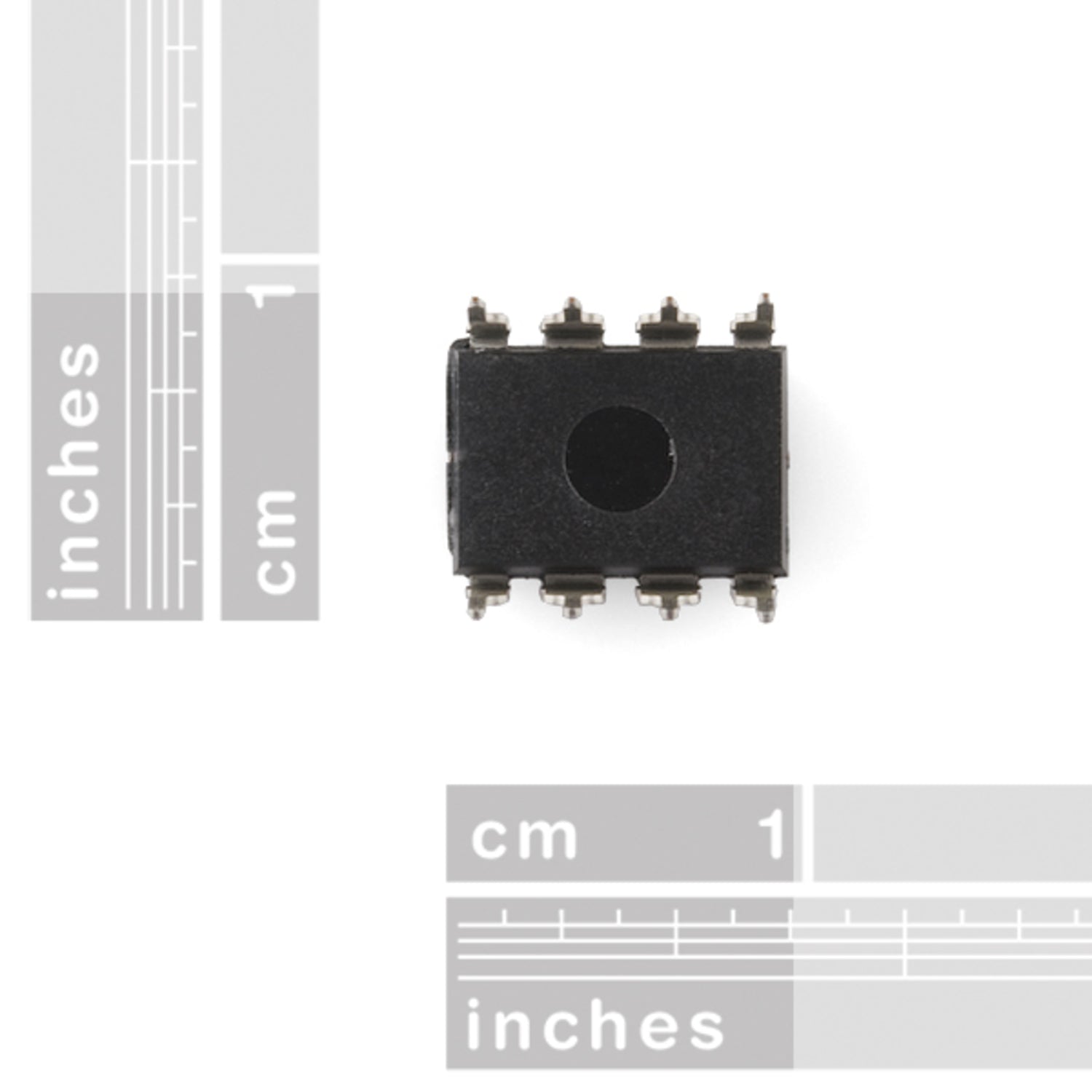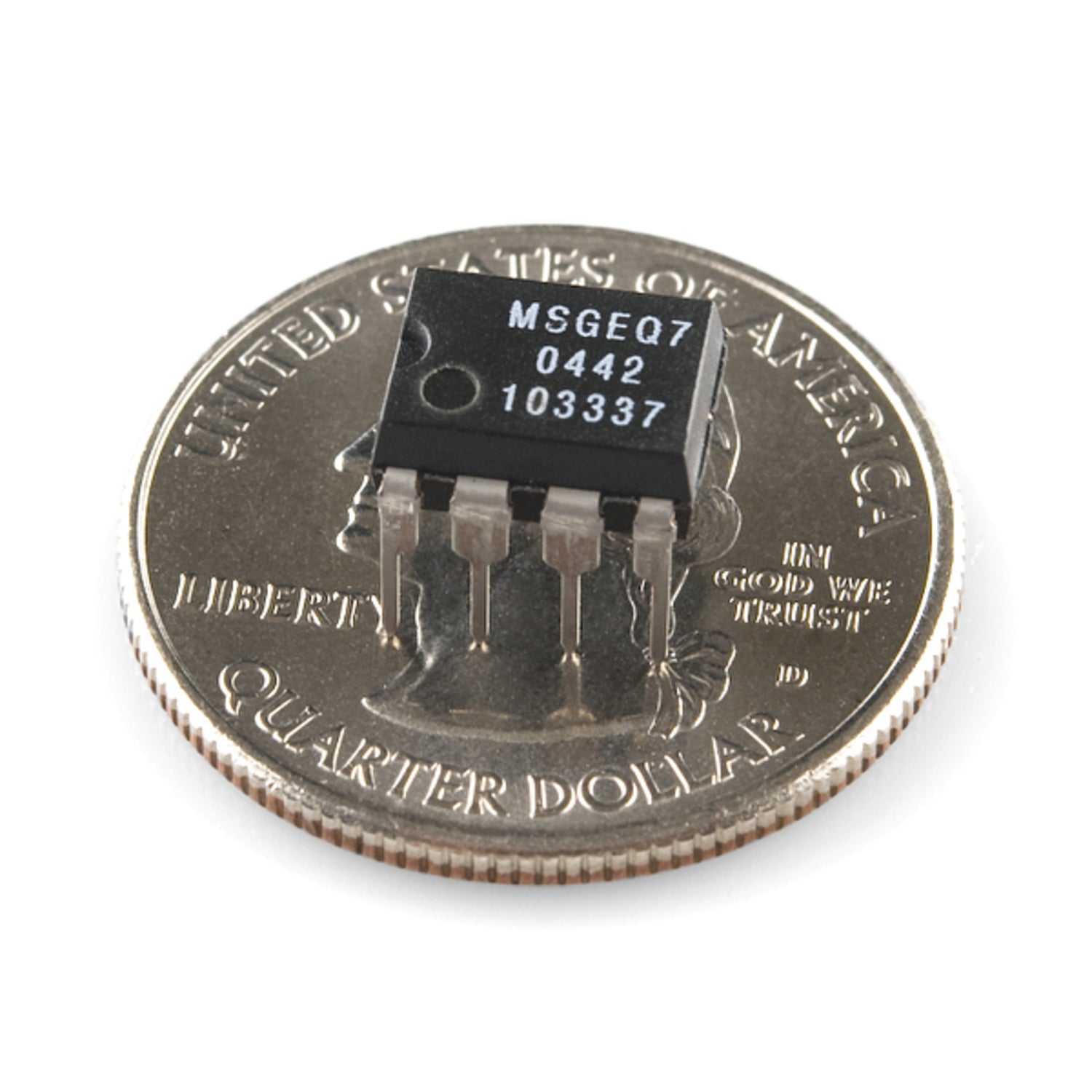The MSGEQ7 is a top - notch seven - band graphic equalizer IC made of CMOS. It divides the audio spectrum into seven bands at 63Hz, 160Hz, 400Hz, 1kHz, 2.5kHz, 6.25kHz, and 16kHz. Each of these frequencies is peak - detected and multiplexed to the output, giving a DC representation of the amplitude of each band. With no need for external components to select filter responses, all you need is an off - chip resistor and capacitor to set the on - chip clock oscillator frequency. The filter center frequencies follow this frequency. Besides coupling and decoupling capacitors, no other external parts are required. It can work with a supply voltage between 2.7 and 5.5 volts, with 5 volts offering the best performance. It has a very low quiescent current (typically less than 1mA), making it ideal for portable audio devices. The multiplexer is controlled by a reset and a strobe, allowing readout with just two pins. The multiplexer readout rate also manages the decay time (10% decay per read), so no extra pins are needed for this function. Key features include low power consumption, only two external components, on - chip ground reference, switched - capacitor filters, operation at 3.3 or 5 volts, 20 dB of gain, on - chip oscillator, output multiplexer, variable decay time, and an 8 - pin DIP package. You can access the product page and datasheet for more details.



Using the MSGEQ7 is quite simple. First, connect the appropriate off - chip resistor and capacitor to set the on - chip clock oscillator frequency. Make sure to choose the right supply voltage between 2.7 and 5.5 volts, with 5 volts giving the best results. The device has a low quiescent current, so it's great for portable audio use. When using the multiplexer, control it with the reset and strobe pins. The readout rate will take care of the decay time automatically. As for maintenance, keep it in a clean and dry environment. Avoid exposing it to extreme temperatures or moisture. If you want to know more details, check out the product page and datasheet.